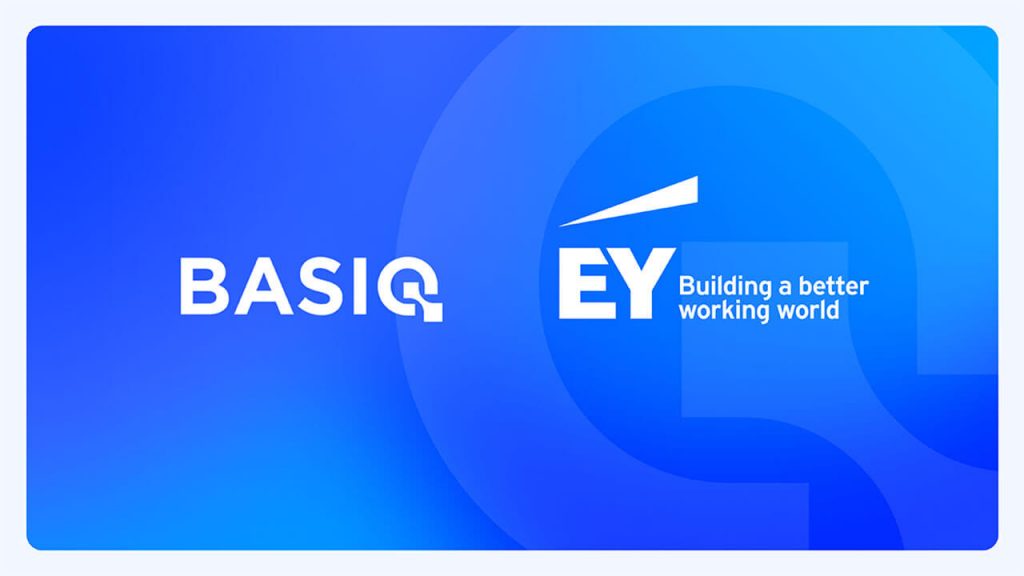Update: As at July 21st 2021, ANZi has rebranded to 1835i.
Intro
This is Instalment 2 of the Basiq Insights series, and the focus turns back to the Banks. The Big Four Banks’ products have been ‘Unbundled’ by Fintechs – attacking every part of their product suite while wrapping it in a better customer experience. In this edition, we build upon this idea and look at how the Big Four have reacted as a result – whether investing, buying, or doing it themselves. Their collective response can be categorised in the following way: building on the core, investing into ventures and banking-as-a-service.
Build upon Core Banking
Banks have historically invested significant amounts of capital in uplifting the capability of their internal IT systems. Core banking systems, as they aged, became (a) plagued with technical debt and spaghetti code (e.g. FORTRAN) (b) entrenched in legacy processes (c) difficult to scale and (d) increasingly expensive to maintain. Therefore, banks responded with massive internal overhauls and digital transformation projects in order to alleviate the expected impact of not responding to even just one of the above four points. This is how they responded:
- In 2008, CBA underwent a core banking transformation project. “The program ran between 2008 and 2013, with a budget of $1.5bn and involving over 1.2 million days of effort” 1
- In 2014, Westpac’s internal transformations of ‘Customer Service Hub’ (Westpac Group) and ‘Panorama’ (BT Financial Group) amassed a ~$1.3bn cost2
- In 2007, NAB undertook a ‘NextGen’, with digital bank UBank being the main beneficiary of the upgrade, beginning in 2008 and estimating to cost $1bn 3
- ANZ has consistently ruled out upgrading their core – until recently – announcing the ‘ANZx’ Banking Platform, which has been under development since 2019.4
These were implemented to reap long term realised gains by automating legacy processes and improving the effectiveness of their underlying systems. So although the numbers are big, they were critical exercises to undertake. This was the first push in being able to support an online-first world, especially with experiences like a modern mobile banking app.
Enter Fintechs
While Banks were transforming their systems internally, Fintechs began building out their own products and services. Fintechs proved themselves to be more nimble, use scalable and flexible IT infrastructure and also offer just one product or service that was better than a Bank. They wrapped their products in a great customer experience and lower cost. Unlike banks that have a one-size fits all approach – Fintechs picked their demographic audience, and catered directly to their needs. Banks’ products were unbundled and even though the significant investment in digital transformation for Banks had a number of benefits (namely internal cost cutting) – few could keep up with the transformative customer experiences that Fintechs were offering. Banks realised that the Fintech threat was growing at an unprecedented rate, and it was important to keep them close.
Investment into Ventures
In order to understand the Big Four’s response to Fintechs, we need to look at how Banks are attempting to recreate the Fintech value prop – whether it’s investing, buying or building. The four main vehicles by which Banks have responded to Fintechs are: (a) Venture Capital Funds, (b) On-balance sheet investments (c) Venture Builders and (d) DIY.

Fig 1.0 – How Banks respond to Fintechs – internal and external
Venture Capital Funds
Each of the Big Four has a dedicated Venture Fund, whereby equity stakes are taken in Financial Technology companies in return for capital. The funds often wield the Bank’s logo but exist as separate entities (off-balance sheet). Fig 2.0 below shows when each Bank established a dedicated venture fund.

Fig 2.0 – When Banks established a Venture Capital fund
Each of the portfolios invests in a wide range of startups – not just Fintechs – ranging from Seed to Series D. Each fund has a specific theme or investment process, and the portfolios vary greatly in size. See below the themes in Fig 3.0:

Fig 3.0 – Bank VC Investment themes and Count
You can see from the above how Reinventure and NAB Ventures are incredibly active investors. They have played a critical role in supporting the wider Australian Fintech landscape – with a whopping 66 investments between them.
The first time CBA took a minority stake in a startup was digital receipt company ‘Slyp’ in 20205 (however, this was not through the x15 vehicle). CBA does, however, provide funding to two local VC players – Square Peg and Zetta Ventures, who manage the capital for them6.
Interestingly, these venture capital arms often co-invest into specific companies. Fig 4.0 Below is a good example of where Banks have teamed up to invest:

Fig 4.0 – Where Banks have co-invested
CBA much prefers the in house approach, and the x15 ‘Venture Builder’ is a testament to that. So what is a Venture Builder?
Venture Builders
x15, NAB Ventures, ANZi and are also known as ‘Venture Builders’ – organisations that build startups using their own ideas and resources 7. Venture Builders look to create and incubate products within their Bank – propelled by access to proprietary data and people – often allowing for the institution to retain a controlling stake in the product that is generated. Some examples:
- x15 was established in 2020 and is touted to provide Fintechs with access to “15 million customers”. This is enticing for businesses that want to get access to CBA customer data while also working with their team who can help with product development and iteration. ‘Backr’ for example, is a digital, task based guide on how to set up a business, built in-house by CBA. Each business was offered $500 to use the service.
- ANZi’s ‘New Business Lab’ works with early stage companies and offers access to talent, ANZ data sets and connection to their VC network
- NAB Ventures previously had a ‘NAB Labs’ whereby rapid product development was conducted. Although NAB Labs has “quietly folded” in late 20208, the function still exists within NAB Ventures. Again, this is aimed at early stage companies looking to get access to NAB’s resources.
- Westpac previously had a ‘Co.Lab’ to incubate products and ideas, however there is little publicly available since 2019.9
Banking-as-a-Service & On-Balance Sheet Investments
On-balance sheet investments are originated from directly within the Bank. They do not occur through a venture capital arm but usually internal M&A teams. There have been significant investments in Financial Technology companies, from three of the big four:
- CBA invested $300m for 5% of Swedish Banking giant and BNPL – ‘Klarna’10
- Westpac invested $40m into Zip and recently relinquished their stake for $367m, after announcing a partnership with Afterpay and banking as a service provider, 10x 11
- NAB acquired 86 400 for $220m, intending to absorb it under UBank 12
- ANZ invested $25.9m into CashRewards 13
DIY
The DIY approach is to build the product internally. This relies heavily on having a solid technical infrastructure to build upon, the right people to execute and also senior management buy-in to fund the project. Each Bank has large digital teams who look to improve the Banks’ customer facing offerings – specifically their banking apps. Some examples of DIY are below:
- NAB produced the ‘Straight Up’ card – a no interest credit card that is simply a monthly fee. It feels and looks a lot like a credit card, as opposed to a BNPL product.
- CBA has announced a BNPL product, a salary advance product (AdvancePay) and a no interest card called ‘Neo’
- Westpac has not announced any fintech-like products that has been created internally, instead opting for the partnership model
- ANZ has also shown no fintech-like products, again opting to use ANZi as the vehicle for fintech investment
With this in mind, the response to the Fintech threat looks something like Figure 5.0 below:

Fig 5.0 – Landscape on the response to Fintech
Royal Commission
As you can see, CBA is the only major looking to do things themselves due to their advantageous core. The other Banks have tried to follow suit with limited success in creating new products in an agile manner. KPMG (2020) argue that: “[Banking] Majors in aggregate have been allocating a reduced proportion of their capital budgets to transformation programs”14. This is due to the Hayne Royal Commission’s findings, with capital being injected into risk and compliance initiatives over any form of digital transformation. KPMG continues: “In recognition of these issues, partnering with fintechs to accelerate innovation has become an increasingly adopted strategy for global banks”. This explains why the partnership models take priority over DIY.
Overall, there’s no denying that Banks are looking to partner with Fintechs to provide the experiences that they cannot provide. In the wake of the regulatory headwinds of the Royal Commission, and propelled by the cost-cutting caused by the pandemic, Fintechs have never been in a better position to create a compelling experience that a Bank can try and partner with, or acquire. Banks are solving for the Fintech threat in many ways – namely through venture capital, venture builders, on-balance sheet investments and some are trying to do it themselves. The latter has become an increasingly hard sell in the wake of the Royal Commission and COVID-19. There is no denying that the capital provided by the Big Four has been instrumental in accelerating the Fintech industry.
The Basiq content series aims to support the Fintech community and is not incentivised, monetarily or otherwise, to promote the companies featured in the posts
References
- https://www.sevenconsulting.com/topic/cba-core-banking-modernisation/
- https://www.afr.com/companies/financial-services/wealth-platforms-brace-for-westpac-s-unleashed-panorama-20200505-p54pvy
- https://en.wikipedia.org/wiki/National_Australia_Bank
- https://www.fintechfutures.com/2016/07/anz-cio-says-old-core-banking-system-not-a-hindrance/
- https://www.afr.com/companies/financial-services/cba-invests-in-slyp-to-drive-digital-receipts-20200507-p54qo6
- (https://www.smh.com.au/business/banking-and-finance/cba-punts-28-million-into-square-peg-and-zetta-ventures-partners-20200728-p55gah.html).
- https://www.linkedin.com/pulse/what-venture-builder-do-jeff-mcdermott/?trk=public_profile_article_view
- https://www.itnews.com.au/news/nab-labs-quietly-folded-under-mid-year-innovation-restructure-558980
- https://www.westpac.com.au/about-westpac/innovation/supporting-australian-innovation/
- https://www.afr.com/chanticleer/doubts-about-cba-s-2b-klarna-bonanza-20210128-p56xfg
- https://www.afr.com/companies/financial-services/nab-s-86-400-deal-gets-accc-green-light-20210330-p57f67
- https://www.spglobal.com/marketintelligence/en/news-insights/latest-news-headlines/anz-to-acquire-19-stake-in-cashrewards-for-a-25-9m-8211-afr-61154038
- https://home.kpmg/au/en/home/insights/2020/11/major-banks-role-of-fintech-partnerships-bank-growth.html
Article Sources
Basiq mandates its writers to leverage primary sources such as internal data, industry research, white papers, and government data for their content. They also consult with industry professionals for added insights. Rigorous research, review, and fact-checking processes are employed to uphold accuracy and ethical standards, while valuing reader engagement and adopting inclusive language. Continuous updates are made to reflect current financial technology trends. You can delve into the principles we adhere to for ensuring reliable, actionable content in our editorial policy.




